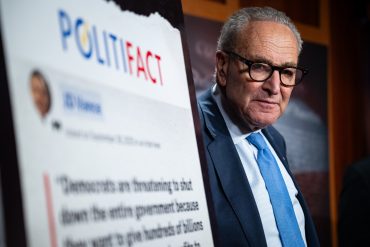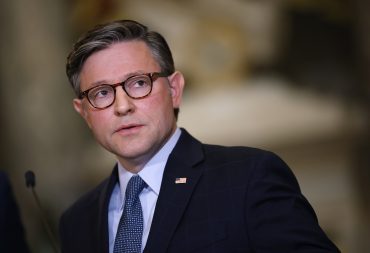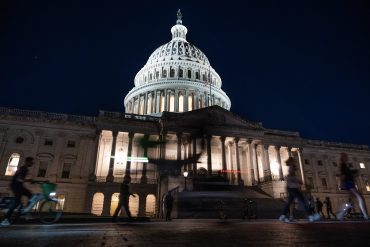
- Federal Regulation
- Government Shutdown
- U.S. Economy
Government Shutdown Disrupts Tech Operations and Approvals
12 minute read

As Regulatory Engines Stall and Institutional Pillars Crumble, Shutdown’s Fourth Day Endangers Trillions in Capital Flows and Undermines the Foundations of American Enterprise.
WASHINGTON — The machinery of American commerce is grinding to a halt, not from any external shock but from the familiar dysfunction of a government unable to fund itself. Four days into the 21st partial shutdown since 1976, the consequences are radiating far beyond the usual inconveniences, threatening the digital infrastructure that underpins modern business and choking off the regulatory approvals that keep capital flowing.
At the Cybersecurity and Infrastructure Security Agency, where 65% employees have been sent home under contingency plans filed with the Office of Management and Budget, a skeleton crew is struggling to monitor threats at precisely the moment when adversaries are most likely to strike. Corporate security chiefs at major tech companies report that the flow of threat intelligence from CISA has slowed to a trickle, leaving data centers and critical infrastructure exposed.
“We’re flying blind,” said one chief information security officer at a Fortune 500 company, speaking on condition of anonymity. “The daily briefings have stopped. The vulnerability alerts have dried up. And the bad guys know it.”
Markets Stumble as Data Drought Deepens
The shutdown’s effects are compounding across the economy. At the Securities and Exchange Commission, the Division of Corporation Finance has effectively ceased operations, freezing at least a dozen technology IPOs that were scheduled for October. SEC officials note that even draft registration statements cannot receive staff comments during the lapse, per agency shutdown protocols.
Investment bankers estimate the delay will cost companies millions in extended preparation costs and could force some to abandon their public market plans entirely if the shutdown extends beyond two weeks. For the venture capital firms backing these companies, the uncertainty is paralyzing decision-making on new investments.
The data blackout may prove even more consequential. With the Bureau of Labor Statistics unable to release employment figures and the Bureau of Economic Analysis sitting on inflation data, the Federal Reserve is navigating monetary policy with outdated information. Bond traders, accustomed to parsing every decimal point of government statistics, are instead trading on hunches.
The 10-year Treasury yield has edged up by about 4 basis points since the shutdown began—a subtle unwind of pre-furlough bets, though analysts warn that prolonged opacity could amplify swings either way. For technology companies, whose valuations are particularly sensitive to interest rate expectations, the uncertainty has been pronounced.

Defense Contractors Face Payment Freeze
The paralysis extends to the defense industrial base, where companies like Lockheed Martin and Boeing have seen contract payments suspended and program milestones delayed. Wall Street analysts have begun penciling in 2% to 5% earnings reductions for the quarter, assuming the shutdown resolves within two weeks. The Defense Contract Management Agency, which administers hundreds of billions in active contracts, has furloughed a significant portion of its civilian workforce.
The ripple effects reach deeper into the supply chain. Palantir Technologies, which provides data analytics to multiple defense agencies, has seen several projects placed on hold. Raytheon Technologies reports similar disruptions to artificial intelligence development work tied to Pentagon contracts.
At the Internal Revenue Service, where up to 60,000 of its roughly 120,000 employees could face furloughs if the impasse drags—per phased Treasury Department contingency plans that keep essentials on duty for the first five business days—the processing of corporate tax matters has slowed. Audits are suspended, private letter rulings are delayed, and the resolution of disputes has been indefinitely postponed. Tax attorneys warn that the backlog will persist for months after the government reopens, with each week of shutdown adding an estimated three weeks to resolution timelines.
Regulatory Logjam Threatens Innovation Pipeline
The Federal Communications Commission has suspended nearly all operations since October 1, including the processing of spectrum licenses that telecommunications companies need for 5G network expansion. Verizon and AT&T have both acknowledged that deployment timelines for midband frequencies will slip, potentially by months, delaying the infrastructure needed for autonomous vehicles and advanced industrial applications. Industry observers note that the FCC’s Wireless Telecommunications Bureau, which handles these licenses, is operating with a fraction of its staff under shutdown protocols.
At the Food and Drug Administration, the acceptance of new applications has ceased, creating anxiety in the biotechnology sector. Several companies with breakthrough therapies awaiting review now face uncertainty about when the regulatory clock will restart, including Avidity Biosciences’ Phase 3 readout for a rare muscle disorder. The pharmaceutical industry estimates each week of delay costs millions in foregone revenue and extended development expenses. FDA officials confirmed that user fee-funded operations continue for safety monitoring, but new drug applications submitted during the shutdown will face processing delays of at least several weeks once appropriations resume.
The Environmental Protection Agency has halted permit reviews, affecting energy projects, manufacturing expansions, and infrastructure developments. While environmental advocates worry about the suspension of enforcement activities, industry executives are equally concerned about the limbo status of pending applications that had been months in the making.

Historical Precedent Offers Cold Comfort
Investors schooled in previous shutdowns point to the 35-day episode of 2018-2019, when the S&P 500 gained 10% as the Federal Reserve’s dovish pivot overshadowed fiscal dysfunction. The Congressional Budget Office calculated in its January 2019 report that the shutdown reduced real GDP by approximately $3 billion and cost the economy $18 billion in deferred federal spending, though most of the impact was eventually recovered.
But this shutdown arrives at a more precarious moment. The economy is showing signs of deceleration, geopolitical tensions are elevated, and the technology sector is navigating the uncertain economics of artificial intelligence investments. The loss of key economic data comes as the Fed is weighing whether to cut interest rates further or pause to assess the effects of previous reductions.
“Markets can tolerate brief shutdowns because they’ve seen it before,” said Adam Turnquist, chief technical strategist at LPL Financial. “But if this extends beyond two weeks, the calculus changes. You start to see real economic damage, not just political theater.”
Security experts warn that the vulnerability is particularly acute in cybersecurity, where repeated lapses in federal vigilance send a signal to adversaries. Analysts at the Brookings Institution argue that such episodes create openings for rivals to test U.S. defenses amid weakened coordination. Sources familiar with classified threat assessments suggest that nation-state actors have intensified reconnaissance during each of the past three shutdowns.
Private Sector Steps Into the Breach
The vacuum is creating opportunities for cybersecurity companies like CrowdStrike and Palo Alto Networks, which have fielded a wave of inquiries from corporate clients seeking private-sector alternatives to federal threat intelligence. Some firms are marketing “shutdown-proof” security services that reduce reliance on government coordination.
Infrastructure companies with strong balance sheets and diversified revenue streams are weathering the disruption more successfully. Equinix and other data center operators report that enterprise demand remains robust, even as federal projects stall. The semiconductor industry, driven by insatiable demand for AI chips, continues to project mid-teens revenue growth, with Nvidia and AMD largely insulated from Washington’s chaos.
But venture capital sources indicate the community is growing cautious. Several investors report that limited partners are holding back commitments to new funds, creating a cash crunch for the deep-technology startups that typically require patient capital and stable regulatory environments. Private equity firms are quietly circling biotechnology and clean energy companies that may become distressed if the shutdown hardens into a protracted standoff.

The Path Forward
Congress has appropriated funds through the end of the fiscal year in the past, always eventually, but the pattern of recurring brinkmanship is taking a toll. Each episode erodes a bit more confidence, delays a few more projects, and hands adversaries another window of opportunity.
For corporate America, the lesson is uncomfortable but clear: the federal government, once a reliable partner in everything from basic research to spectrum allocation to cybersecurity coordination, has become a source of recurring risk. Companies are responding by building redundancy, diversifying revenue away from government contracts, and investing in private-sector alternatives to federal services.
The technology sector, in particular, is reconsidering its dependence on federal infrastructure. Cloud computing giants are expanding their own threat intelligence capabilities. Telecommunications companies are exploring private spectrum sharing arrangements. Biotechnology firms are looking to international markets to reduce reliance on FDA timelines.
Whether this shutdown lasts days or weeks, it will leave scars. Deals will be delayed, vulnerabilities will be exploited, and trust will be eroded. The question is no longer whether Washington’s dysfunction will affect the economy, but how much damage will accumulate before it ends.
Yet there are murmurs—faint but persistent—of bipartisan appetite for structural reform. Senate Budget Committee members from both parties have quietly circulated proposals for automatic continuing resolutions that would prevent future shutdowns, while a House working group is exploring biennial budgeting mechanisms that could defuse annual standoffs. Whether these conversations gain traction may depend on how much pain this episode inflicts.
In the meantime, the cost is mounting: in frozen approvals, in exposed networks, in deferred decisions. The Congressional Budget Office will eventually tally the fiscal impact in billions of dollars. But the true cost may be harder to quantify—a slow erosion of American competitiveness, measured not in quarterly reports but in opportunities seized by rivals, one shutdown at a time.







